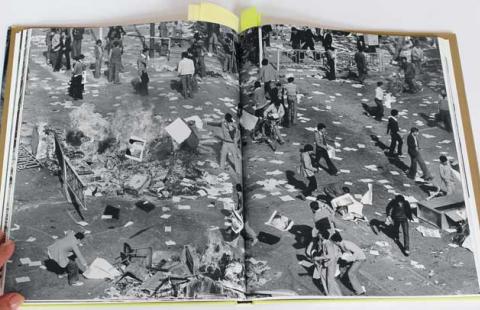Only a Signal Shown: Week 5 (March 2 - 9, 2013)
Week #5 Opening Reception: Friday, March 8, 2013, 7:00 – 9:00 PM, Screening by Mariam Ghani at 8:00 PM
Week #5 Dates: March 2 – 9, 2013
Exhibition Dates: February 1 – March 9, 2013
Gallery Hours: Tuesday – Saturday, 12:00 – 6:00 PM
Join us for the Opening Reception of Week #5 on Friday, March 8, 2013, 7:00 – 9:00 PM, with a screening by Mariam Ghani at 8:00 PM. Week #5 of Only a Signal Shown, curated by Taraneh Hemami, explores issues of cultural memory and history with work by Morehshin Allahyari, Mariam Ghani, Julia Meltzer and David Thorne, Azin Seraj and Ali Dadgar, and Sandra Schaefer.
The artists in this program explore histories and stories of places far away and within reach, of long ago and still-present memories. Their work constructs and reassembles facts and fiction, exploring similarities and differences in perceived realities. They investigate secrets and mythologies, archival material and fragmented memories to navigate parallel histories and negotiate connections between the narratives of palaces and prisons, public squares and dividing walls.
VIDEO PROGRAM, ONLY A SIGNAL SHOWN WEEK #5:
1. Julia Meltzer and David Thorne
It’s Not My Memory of it: Three Recollected Documents, 2003
25 min
It’s Not My Memory of it: Three Recollected Documents is a documentary about secrecy, memory, and documents. A former CIA source recounts his disappearance through shredded classified documents that were painstakingly reassembled by radical fundamentalist students in Iran in 1979 following the takeover of the U.S embassy. A CIA film—recorded in 1974 but unacknowledged until 1992—documents the burial at sea of six Soviet sailors, in a ceremony which collapses Cold War antagonisms in a moment of death and honor. A single photograph pertaining to a publicly acknowledged but top secret U.S. missile strike in Yemen in 2002 is the source of a reflection on the role of images in the dynamic of knowing and not knowing.
2. Morehshin Allahyari
Over There is Over Here, 2011
5:43 min
Over There Is Over Here uses 3D animation and data glitch as a way to illustrate a presence-less presence, showing the passage and collapsing of time in which past and present come together to create an “unreal” reality. The piece explores the dialectics of time and space, real and unreal, to define and critique the position of those who no longer live in Iran in relation to the many activists, journalists, and students currently in prisons in Iran.
3. Sandra Schaefer
On the Set of 1978ff, 2011
58 Min
The Iranian Revolution is reconstructed, both exemplarily and fragmentarily, as an urban phenomenon based on its representation in film, television and photography. From the perspective of media production and reception, Schaefer engages along with further participants in a re-reading of the events. The focus is on processes of handing down and of translation into different contexts, interweaving the historical material with interview passages, staged public debates and text commentaries.
4. Azin Seraj and Ali Dadger
Realized Phantoms, 2011
19:54 min
Realized Phantoms draws from iconic footage of historical events to explicitly frame viewers as participants in these historical moments. The footage digitally dissolves into colorful abstractions while the audio melodically morphs the images together and sets up a hypnotic and meditative environment. This work asks us to confront the ethically troublesome relationship between the work of the artist and the struggle for political freedom.
5. Screening on Friday, March 8 at 8:00 PM:
Maryam Ghani
A Brief History of Collapses, 2010 - 2012
22 min
A Brief History of Collapses is a two-channel video that traverses the spaces of the restored Fridericianum (1779, Simon Louis du Ry) and ruined Dar ul-Aman Palace (1929, Walter Harten et al.) in two parallel tracks, exploiting the similarities in their architectures to explore both similarities and differences in their histories.





